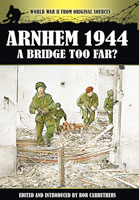York's Military Legacy (Paperback)
Series: Military Legacy
Pages: 128
Illustrations: 120
ISBN: 9781526709257
Published: 15th November 2017
(click here for international delivery rates)
Need a currency converter? Check XE.com for live rates
| Other formats available | Price |
|---|---|
| York's Military Legacy ePub (18.2 MB) Add to Basket | £6.99 |
One of the oldest settlements in Western Europe, York grew up on dry land with protective rivers and associated wetlands giving security and mobility. Early, prehistoric settlement was on nearby drier, raised areas along the floodplain. Here the Romans built a great, northern, fortified city and military settlement from which they could foray overland into northern England or by ship and the coastal route to Scotland and the Picts. York’s significance was emphasized when Constantine was made Emperor whilst residing there.
Lean times followed after Roman abandonment and Saxon neglect before the Vikings swept into northern England, with Jorvic, re-born as their capital, York, much to their liking. Once subsumed into Anglo-Saxon Northumbria, York continued its huge strategic and military significance through late Saxon times, during the Norman Conquest, and into medieval England. Indeed, two of the most far-reaching battles in English history were fought at nearby Fulford and Stamford Bridge. York’s military significance grew again during the Wars of the Roses, with the Battle of Towton in 1461 described as the most barbaric ever fought on British soil.
Following oscillating and vicious disputes over religion during the reigns of the later Tudors, divisive and punitive civil war played out again under the Stuart kings and Parliamentary Commonwealth. Through all this, York was a major strategic location in northern England; an important base for those commanding it, a significant prize for those who did not. This military importance declined into modern times but the city retains garrison and regimental ties. The last direct conflict occurred when York was targeted for retaliatory Baedeker raids by German bombers during April 1942. York’s remarkable history and longevity, and its significance in English and sometimes international politics and economics, have left a unique, unparalleled military history.
A basic book from which to depart to learn about the military importance of York City in history.
Miniaturas JM
Read the full Spanish review here
The result is an interesting introduction to York’s role in English military history.
History of War
Read the full review here
The author has provided a fascinating description of the military legacy of York. As with the other books in this excellent series, there are many illustrations, including some in full colour and some very rare images.
Firetrench
Read the full review here
I found this book to be very interesting and a must for those who are interested in military history. I feel that this publication is well presented, and would make a handy guide if you were going to visit Yorkshire this will bring to life some of the historical sites of this beautiful county. I never realised that Yorkshire has such a rich and varied military history.
Armorama
Read the full review here
Once again, my knowledge of the city of York has been gathered from TV documentaries and fro the historical novels of Bernard Cornwell, in which the city plays a prominent role. Once agaian, it is Ian Rotherham’s superb book that provides me with everything I could ever want to know about York and its military history. This series is absolutely superb.
Books Monthly
Read the full review here
The book looks like a guide but it is not just a guide. Inside you can find information about what has been a city full of history for at least 2000 years and that deserves to be visited with this book to keep us company.
Old Barbed Wire Blog
Read the full Italian review here
If you read about any period of our
Village Publications
history, chances are that somewhere in
the story there will be a reference to
York. Here the Romans built a great,
northern, fortified city and military
settlement from which they could control
northern England. Later the Vikings
renamed the city Jorvic, and made it their
capital. Once subsumed into Anglo-
Saxon Northumbria, York continued its
strategic and military significance
through late Saxon times, during the
Norman Conquest, and into medieval
England. Indeed, two of the most farreaching
battles in English history were
fought at nearby Fulford and Stamford
Bridge. York’s military significance grew
again during the Wars of the Roses, with
the Battle of Towton in 1461, which
probably saw the highest death toll of any
battle on English soil.
A new book York’s military legacy by
Ian Rotherham traces this history through
to the religious disputes of the late
Tudors, and the Civil War between the
Stuart Kings and Parliamentary
Commonwealth. Throughout its strategic
location made it a prize for any side. The
two world wars saw more action and the
book reviews the city’s military legacy
right up to the present day. It also
contains a map and guide to the town
walls and other defences.
As featured in
Sheffield Star
As featured in
Yorkshire Post





















